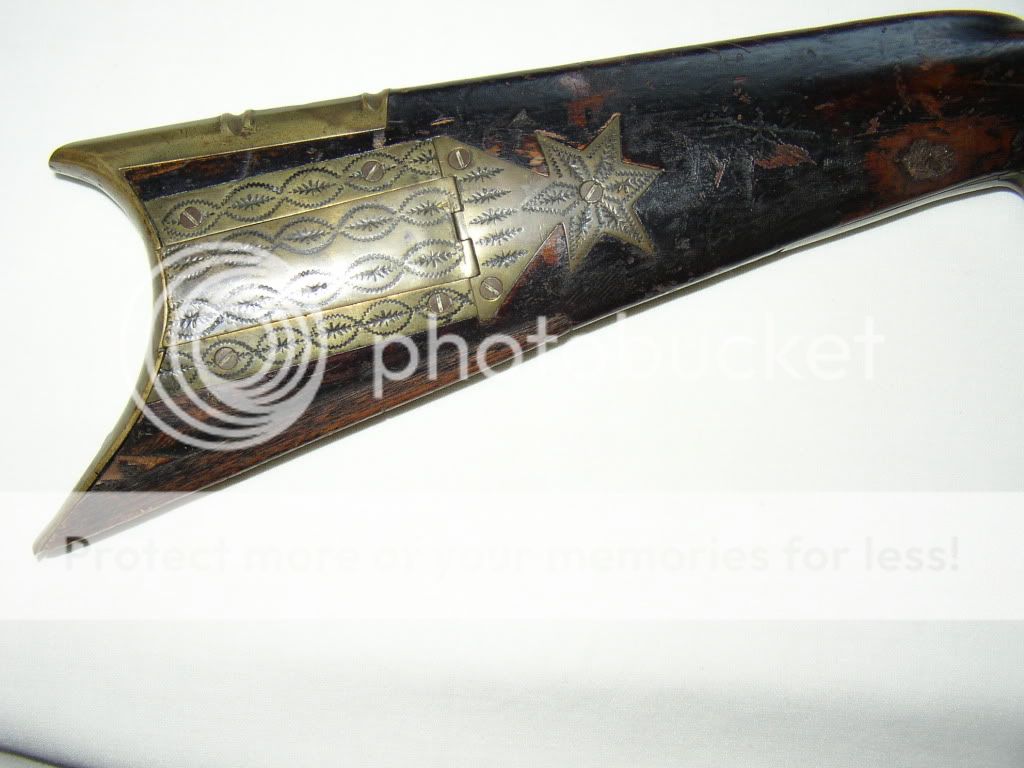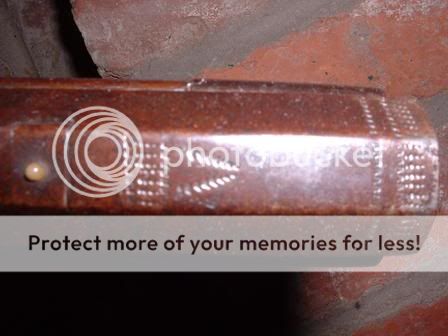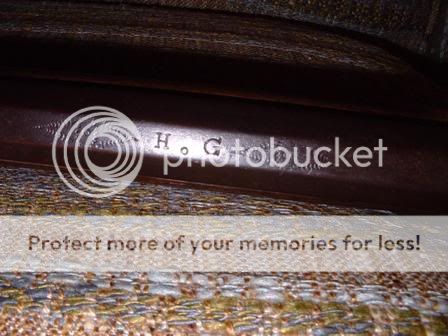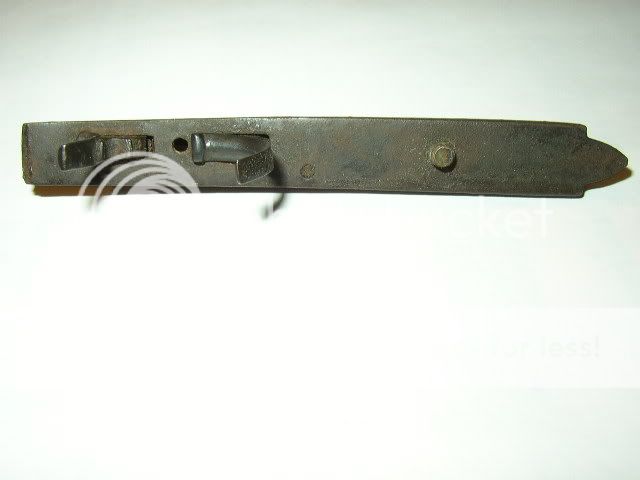A History of the Gillespie Rifle Makers of East Fork NC
William Gillespie father of John Gillespie settled on the Cowpasture River of Virginia circa 1745. He had 320 ac of land surveyed in 1746 which, having the ability to own this much land, would make him a man of some means. It is assumed that he came to America from the Ulster area of Ireland into the port of Philadelphia PA. This has not been proven but DNA testing on the Gillespie Gun Maker line indicates Scottish/Nordic/Viking ancestry.
The Gillespie family made primarily working class guns that were made to hit where they were aimed and to do so shot after shot. These mountain rifles were made from American black walnut or maple with a sprinkling of cherry, pear or apple wood. They were the descendants of Pennsylvania longrifles but normally without the brass patch boxes and rococo carving often found on those rifles. They were usually 5 foot to 5 foot 6 inches in length, and very graceful in appearance. The barrels were usually long and large enough in diameter to safely handle the often heavy charges of black powder being used. This made for a muzzle heavy rifle that most often was carried slung across the saddle of a horse instead of being carried in a person’s hand. Often you can see where the forearm wood has been worn down by wear against the saddle.
Early Gillespie’s (prior to circa 1825) were flintlock’s with 45 to 46 inch long barrels. Most were caliber .41 to .48 and were designed to shoot patched round balls In 1822 the percussion cap was patented and became the preferred ignition for muzzle loading guns. Many of the old flintlock rifles were converted to the new percussion system and continued to serve their owners for many years. Other customers preferred the reliable flintlock system and requested new flintlock rifles well into the mid to late 1800’s.
John Gillespie of VA was the first of the NC Gillespie gun makers. John was born in Augusta County, VA in the Cowpasture River valley near present day Clifton Forge, VA. His parents, William and Mary Gillespie, settled in that area circa 1745. William owned 320 acres of rich bottom land and later acquired two other 50 AC parcels near the confluence of the Cowpasture and the Jackson (which formed the James River).
John Gillespie had an uncle named Robert that owned a powder mill and was also thought to have been a gun maker, but proof of this is evasive. It is also thought that John’s mother may have been a sister or daughter of James Simpson, a Cowpasture River neighbor. James Simpson may possibly have been part of the Simpson gunmaker family of Virginia. Possibly, John was taught the gun makers’ trade by one of these relatives, documentation has not been found to prove this.
John married Jane Harvey, daughter of William and Rebecca Carruthers Harvey in Botetourt County, VA on August 31, 1779. John and Jane were married almost a year when his parents moved to the North Fork of the Holston River in what was then Washington County, VA.
John was a member of the Botetourt County, VA Militia during the Revolutionary War. Family stories and other evidence indicate he fought with the Botetourt County Militia against British General Cornwallis’s troops at the Battle of Clapp’s Mill near Burlington, NC, March 2, 1780. He also may have fought with Greene at the battle of Guilford Courthouse.
William, John and Jane’s oldest son, was born in SC on December 28, 1785, so they apparently moved to the old Pickens District of SC shortly after the end of the Revolutionary war in 1783. John was rumored to have had a “Gillespie Forge” in the George’s Creek area of present day Easley, SC.
John moved again Circa 1799/1800, this time to property located on the East Fork of the French Broad River located in the part of Buncombe County that is today in Transylvania County, NC. Here John staked claim to 314 acres of land and built his gun shop on this property. John was known to have used water power in his gun shop.
John and Jane Gillespie had three sons, William (12/28/1785 – 9/23/1851), Mathew (7/23/1788 – 5/16/1871) and Robert Harvey (2/1/1791 – 5/29/1881). John taught each of his sons the gun maker’s trade. They helped him run his water powered gun mill located near East Fork. Family stories relate that John had a gun forge near Boring Creek and evidence has been found that substantiates this. As far as I know John, his oldest son William and his youngest son Robert Harvey did not sign their guns. Mathew signed his during his Mills River years but whether or not he did while working at his father’s East Fork shop is not known.
John and Jane also had three daughters, Rebecca, Mary and Isabel. Family tradition has it that one of the daughters was the best shot in the family and took on the job of test firing the rifles for accuracy. If this story is true, it would most likely have been Isabel since the 1804 Walton census does not show Rebecca or Mary in East Fork. Mother Jane must have also been handy with a rifle; there is a family story about her running off a band of roving Cherokee Indians with one of the family rifles.
John died 4/7/1822 on his “last long hunt” into the Toxaway area North of East Fork. After searching for three days his sons found him dead in his camp. They brought him back to his East Fork home and buried him in the Gillespie Family Cemetery.
John and Jane Gillespie’s oldest son William married Mattie Millberry Davis and they remained in the East Fork area. William imade rifles there until his death 9/23/1851. William is buried in the same family cemetery as his father.
William and Mattie’s son, John Harvey, also made Gillespie Rifles. After the death of his first wife, Sarah (Sallie) Glazener, he married his first cousin Sarah Gillespie, daughter of his Uncle Mathew and Aunt Elizabeth Sitton Gillespie, who were living in Mills River, NC. They remained in East Fork until their circa 1866 move to Mills River. The 1870 industrial census shows John working there as a gunsmith probably in his Uncle Mathew’s shop (or possibly in his deceased brother-in-law Phillip’s shop). John Harvey and Sarah are buried in the Sitton/Gillespie cemetery in Mills River, NC.
John and Jane Gillespie’s middle son Mathew, moved to Mills River circa 1810, probably around the time of his marriage to Elizabeth Sitton. There Mathew trained his 5 sons in the art of gun building. Mathew made rifles in the East Fork shop and later in his Mills River, Henderson County NC shop. Many of his rifles carry his initials/mark ( M.G) on the top barrel forward of the hind sight. Below is one of his early (circa 1810) rifles


Mathew and Elizabeth Gillespie’s oldest son John and their next to youngest son James, both moved to Union County, GA in 1849. They first ran a shop together but later split-up over an accident involving a loaded gun barrel firing when heated in the forge. They went their separate ways after that incident. Both are buried in Union County, GA. John made rifles first in the Mills River shop and later in his Union County GA shop. He signed his rifles (J.G) Here is a photo of one of his rifles.

Note the slanted/oval grease hole which is a feature that I have seen on quite a few Gillespie rifles.
His brother James also made rifles in the Mills River shop and later in his own shop in Union County GA. He often signed his rifles (Ja. G). A boys rifle made by James is in the Atlanta History Museum, Folk Life section. Many of his tools are also on display there.
Mathew and Elizabeth Gillespie’s second oldest son Phillip and youngest son Wilson both died 1/15/1864 from sickness while serving with the United States NC Mounted Infantry in East TN. Phillip never married. Wilson first married Rachel N. Taylor. After Rachel’s death in 1851 Wilson then married Malinda B. Underwood. Both Phillip and Wilson are buried in East Tennessee near where they died.
Philip was never married but he became quite a business man, He purchased his Grandfather Philip Sitton’s farm and iron works located adjacent to the Gillespie gun shop in Mills River. He also owned a brandy still that was legal by the laws of the state of NC. Philip signed his guns (P.G), and quite often dated them. He, like his brothers, used “pine bough” stamps to decorate the barrels of many of his rifles. I know of three of his rifles that had full patchboxes. Here is a photo of one of them.

I believe that Philip had many of his relatives working in his Mills River shop, I suspect Philip was having them stamp his initials/mark on all the guns made in his shop. This may be the reason that you will see many different work styles on rifles carrying his mark.
Philip’s younger brother Wilson was also a gun maker, he gave that as his occupation when he joined the US Mounted Infantry. I have not seen any rifle that is attributed to him so his mark is unknown. I do suspect that he would follow the family style and mark them (W.G) but this is only an educated guess.
Mathew and Elizabeth Gillespie’s middle son Harvey married Sarah Hooper from Jackson County, NC. Harvey moved to Jackson County in 1852 and remained there until circa 1868 when they moved back to Mills River. It is thought that Harvey worked with John Harvey in the Gillespie Mills River gun shop until his death in 1877. Harvey and Sarah are buried in the Sitton-Gillespie cemetery at Mills River, NC.
Harvey made rifles at the Mills River shop and also while in Jackson County NC. Harvey signed his rifles (H.G) some are also dated. Like his brothers Harvey often used a stamp that resembles a pine bough. Here are photos of one of his rifles that is highly decorated using the pine bough stamp.



John and Jane Gillespie’s youngest son Robert Harvey married Sarah Aiken and they remained in East Fork. He reportedly continued building guns but also farmed and purchased a number of parcels of land in present day Transylvania County. As far as I know Robert did not sign his rifles.
Robert Harvey and Sarah Gillespie’s oldest son Jackson Gillespie also remained in East Fork and is known to have built at least one rifle. Jackson Gillespie was the postmaster at East Fork from 9/14/1875 to 7/16/1879. Research by Bert Sitton of Hendersonville, NC indicates Jackson Gillespie ran a saw mill and grist mill on the East Fork River. Jackson also kept a toll road which ran from the SC line to the "old gate place" just below Jackson's home (later the home of B. A. Gillespie).
As you can see, John Gillespie was the first of the well known NC Gillespie gun makers. Beginning with the move to East Fork circa 1799, he was the grand sire of at least 12 NC gun makers.
Now I will mention several “traits” to look for on a Gillespie made mountain rifle.
First I look for the “Gillespie” style triggers. I have never seen this type trigger on any other southern mountain rifle. Here is a photo of the ones on a rifle by Mathew:

The trigger adjustment screw is missing but it would be in the normal location between the front and rear trigger. Note the little file work behind the front trigger. Many of the earlier Gillespie rifle original triggers were made like this. Notice the little round knob at the top of the rear trigger.
The trigger plate often had a “fingernail” on the back end, here is a photo of one

Many of the early Gillespie’s did not have screws holding the trigger plate in place. They were held in the mortise by a “lip” on the front of the trigger guard bow and in the rear the end of the screw that held the trigger mainsping butted up against the trigger plate and held it in place.
Another Gillespie “trait” is the forward turned finger guard like the one in the photo below.

Note also the “Gillespie” style triggers.
Most of the early Gillespie’s that I have seen have slightly swamped barrels and have hand forged iron hardware. Later on I.e. Mills River rifles quite often had brass hardware and sometimes a mix of iron and brass.
I have seen several Gillespie’s both, early and late, that had non-typical (for southern guns) vee shaped forearms. However most were rounded.
Many of the late Mills River Gillespie butt plates had notches filed in the top of the butt plate returns like the one shown here.

Most Gillespie’s that I have seen have been fairly small caliber with the largest around being around.48 caliber. The barrel tend to be on the heavy side and the early ones had 45 inch or slightly longer barrels.
Submitted by T. Dennis Glazener GGG Grandson of John Gillespie 1753-1822.

